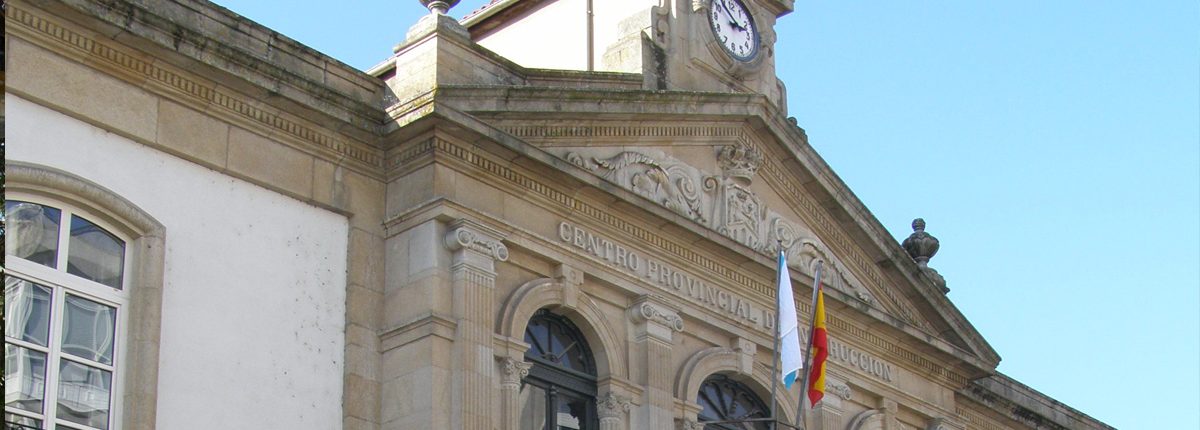
Otero Pedrayo High School
Rúa Padre Feijóo, 12, 32005
First centre of secular education of the city. Its highlights are the classic lines of its austere Modernist façade and the lavish ornamentation of its small auditorium.
ES | GL Instituto Otero Pedrayo
The first centre of secular education in Ourense, still active, was opened in 1896. In 1929 it had to be rebuilt after a terrible fire. Only a part of the antique furniture was saved, as well as the tiles and the staffroom’s Moorish baseboard.
The façade is Eclectic and Classicist. The interior is organized around two large rectangular courtyards. Its highlights are the central staircase, in Empire style with a stone balustrade, and the auditorium, a hall of lavish ornamentation and a beautiful example of local Modernism.
Many leading figures of Galician culture studied here, including that one who gave his name to the school, writer Otero Pedrayo.
This centre houses a permanent exhibition of historical and educational material and a library with interesting volumes.
The history of its construction takes almost a quarter century: the Provincial Council commissioned the work to municipal architect Juan Redecilla and the first stone was laid in 1869. The works were interrupted by economic problems in 1881, and resumed in 1885, commissioning a new project to Antonio Crespo López. A part of the beautiful furniture he designed for the interior managed to escape the fire of 1927.
Behind the iron and granite fence, you can see a front portico with semicircluar arches between smooth pilasters and an entablature with metopes and triglyphs. On the top floor the layout is repeated with three arched doors connecting to a balcony with a stone balustrade. Above it, there is a triangular pediment with the coat of arms of Ourense. And as an ornamental top, a clock. The rest of the façade is austere: two sections separated by an impost, with windows and balcony doors on the North side.
The large lot allowed a modern interior structure, organizing it around two rectangular and symmetrical patios, one on the North and one on the South.
Inside, the highlights are the wide staircase located to the West, Empire style, with a simple and monumental stone balustrade, and the auditorium in the central part, which is accessed through three doors with arcades, one of the examples of Modernism in the city.
The façade bears the name of “Provincial Training Centre”, since the bulding began hosting the Secondary School, the School of Arts and Crafts, the School for Teachers and the Public Library, severely affected by the fire in 1929. Most of the documents from the monasteries after the ecclesiastical Confiscation were kept here, and many were lost, so in later years these funds were to be stored elsewere, and the building became fully an education centre.
Transport
Traffic Area
Bus / Taxi Stop: Posío Garden
